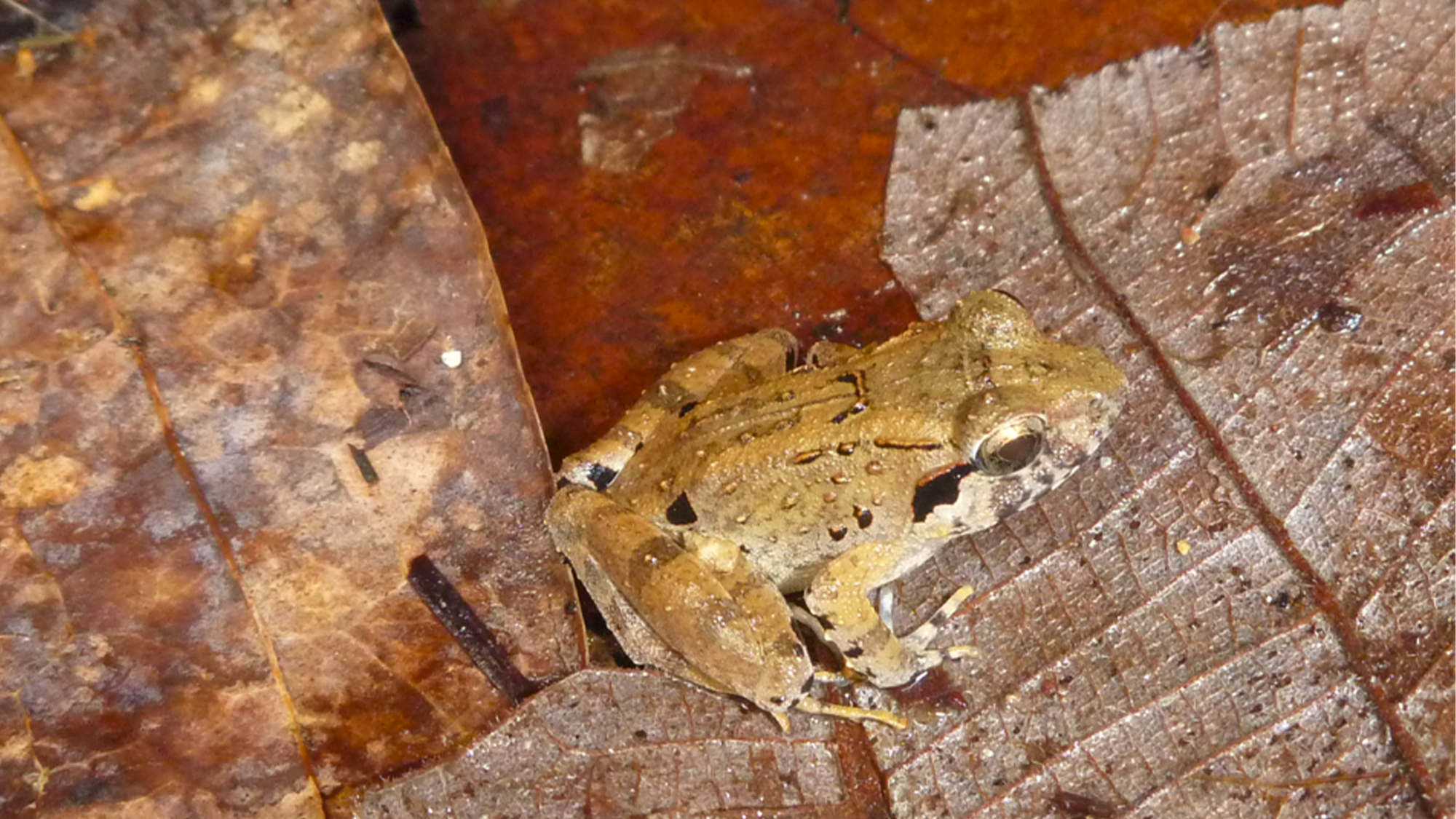

Frogs are well known for their sticky, whip-like tongues, lumpy warts, and the colorful, poisonous skin covering some species. One group of frogs in Southeast Asia has another distinguishing feature–fangs. Scientists recently discovered a new species of fanged frog that uses these bony jaws jutting out of their lower jawbone to fight with other frogs and hunt shelled prey like giant centipedes and crabs. Limnonectes phyllofolia is also the smallest known species of fanged frog and is described in a study published December 20 in the journal PLOS ONE.
[Related: Female frogs appear to play dead to avoid mating.]
“This new species is tiny compared to other fanged frogs on the island where it was found, about the size of a quarter,” study co-author and biologist Jeff Frederick said in a statement. “Many frogs in this genus are giant, weighing up to two pounds. At the large end, this new species weighs about the same as a dime.” Frederick is a postdoctoral researcher at the Field Museum in Chicago and conducted this research as a doctoral candidate at the University of California, Berkeley.
The frogs were found on the mountainous island of Sulawesi in Indonesia. It’s a large 71,898 square mile-long island with a large network of volcanoes, mountains, lowland rainforest, and cloud forests in the mountains.
“The presence of all these different habitats mean that the magnitude of biodiversity across many plants and animals we find there is unreal—rivaling places like the Amazon,” said Frederick.
Members of a joint United States-Indonesia amphibian and reptile research team noticed something surprising on the leaves of tree saplings and moss-covered boulders in the jungle–frog eggs.

Frogs lay eggs covered by a jelly-like substance instead of a hard and protective shell like a bird. To keep them from drying out, most amphibians will lay their eggs in water. Instead, these frogs left their egg masses on leaves and mossy boulders above the ground. After finding these nests, the team began to see the small, brown frogs.
“Normally when we’re looking for frogs, we’re scanning the margins of stream banks or wading through streams to spot them directly in the water,” Frederick says. “After repeatedly monitoring the nests though, the team started to find attending frogs sitting on leaves hugging their little nests.”
The close contact with the eggs allows the adults to coat them with the right compounds to keep them moist and safe from bacterial and fungal contamination. They were named Limnonectes phyllofolia, which translates to “leaf-nester.”
[Related: Go (virtually) adopt an axolotl, the ‘Peter Pan’ of amphibians.]
The frogs who laid these eggs on leaves and boulders were tiny members of the fanged frog family. The caretakers of the nests were all males. According to Frederick, egg-guarding behavior from male frogs is uncommon, but not unheard of. The team theorizes that the frogs’ unusual reproductive behaviors may also relate back to their smaller fangs. While some of their relatives have larger fangs that help them ward off competition, these frogs likely evolved a way to lay their eggs away from the water and lost the need for such big fangs.
“It’s fascinating that on every subsequent expedition to Sulawesi, we’re still discovering new and diverse reproductive modes,” says Frederick. “Our findings also underscore the importance of conserving these very special tropical habitats. Most of the animals that live in places like Sulawesi are quite unique, and habitat destruction is an ever-looming conservation issue for preserving the hyper-diversity of species we find there. Learning about animals like these frogs that are found nowhere else on Earth helps make the case for protecting these valuable ecosystems.”
